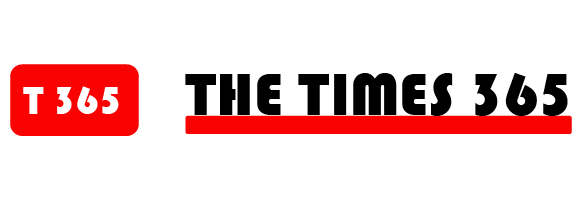So, you’re ready to get serious about this whole “investing” thing. Except you keep bumping up against one nagging detail: it takes money to invest in, well, anything.
This raises a whole new set of questions about how to save money, in addition to all the questions about how to invest it once you have it.
I get it, you’re not rich. For the purposes of this article, I’m going to use the most boringly average person in America as our case study: Median Melissa. She represents, you guessed it, the median earner, taxpayer, and spender.
All data below is sourced from the Bureau of Labor Statistics except where otherwise noted. Anyone at any income level can cut the spending categories outlined to save similar percentages of their income.
But like everything else in life, the more you earn, the easier it is. I focus on cutting spending here, but you should also look for ways to boost your income. Consider asking for a raise, pursuing a higher-paying job, earning additional certifications or degrees, switching career paths, or starting a side hustle.
Finally, keep in mind that if you have high-interest debt, such as credit card debt, you should start by tackling your debt and funneling your savings there first.
Without further ado, here’s a list of expenses and how to cut them, in order of the income percentage they devour. Keep in mind you don’t need to cut all your expenses simultaneously – but the more you cut, the faster you’ll save money.

Housing (27% of Income)
Median Melissa’s household earns $73,573 in gross (pre-tax) income. Of that, she spends $19,884 on housing, or 27% of gross income.
If Melissa wants to save $50,000 in two years, that means that if she can eliminate her housing payment, she’ll save nearly $40,000 and be roughly 80% of the way there already.
There are many ways to house hack and reduce or eliminate your housing payment. The classic model involves buying a multifamily, moving into one unit, and renting out the other(s). But it’s not the only option; here’s how my business partner Deni used three different house hacking tactics over the years to reduce her housing costs on suburban single-family homes.
My wife and I take a different tack: we live overseas, where her employer (a school) provides us with free furnished housing. It’s a common perk for international teachers and other educators.
Potential Annual Savings for Average American: $19,884
Related: Money Saving Tips: Not Enough Money To Invest, Think Again!
Transportation (13%)
Median Melissa pays $9,576/year for transportation. Nearly all of that comes from owning, maintaining, fueling, cleaning, and parking a car.
Which, by the way, is in line with the average annual cost of car ownership calculated by AAA, at $8,849.
The long and short of it? Cars are expensive to own, operate, and maintain.
So while you’re looking into a new home to house hack, look for homes located in convenient places for getting around by foot, bike, public transportation, carpooling, scooter, or some other mode of transport that doesn’t require you to own a car.
I know, no one wants to hear it, and almost no readers will even consider getting rid of one or more of their cars. So here are three other options:
- Rent out your car on Turo when you don’t absolutely need it.
- Keep your car forever instead of upgrading every few years to the latest, shiniest car.
- Sell your expensive car and buy an inexpensive-but-reliable car.
My wife and I shared one car for the last four years, and live without a car currently. We’re laughing all the way to the bank.
Potential Annual Savings for Average American: $9,576

Federal Income Taxes (8-13%)
With an average gross income of $73,573, Melissa’s tax bill looks different depending on whether she’s single or married.
If she’s married and they take the standard deduction, her annual household income tax bill is $5,513 barring any special tax credits or above-the-line deductions. She and her husband’s first $19,400 is taxed at the 10% rate ($1,940), and their next $29,773 is taxed at the 12% rate ($3,573). The standard deduction removed $24,400 from their taxable income.
If Melissa is single, her annual household income tax bill is higher, at $9,361. She pays 10% on her first $9,700 of income ($970), 12% on the next $29,775 ($3,573), and 22% on the next $21,898 ($4,818). Her standard deduction is $12,200.
For ease of computation, we’ll assume Melissa lives in Texas, where there’s no state income tax. If she lives in Baltimore instead, she can expect to pay another 8% in state and city income taxes.
Melissa could reduce her tax bill by maxing out her 401(k) account, chopping $19,000 off her taxable income. That would cut her income tax bill to $3,233 if she were married, or an impressively low $1,117 if her husband also maxed out his 401(k). Single Median Melissa could only cut her tax bill to $5,181, though.
Potential Annual Savings for Average American: $4,395
Restaurants, Delivery, Takeout (5%)
Median Melissa spent $3,365 last year on restaurants and other meals she paid a premium for someone else to make for her.
Besides being less healthy, the food was marked up far higher than the cost of the ingredients. Food that someone else makes for you is effectively an entertainment expense, not a necessity.
You could save nearly $7,000 by putting a two-year moratorium on food made by businesses. Willing to give it a try?
Potential Annual Savings for Average American: $3,365
Related: 4 Steps to Finally Tackle Your Debt—and Start Growing Real Wealth
Smoking (3-6%)
According to SmokeFree.gov, the average pack of cigarettes in the U.S. costs $6.28. That’s thousands of dollars a year that literally disappears in a puff of smoke, with nothing to show for it but a (much) shorter life expectancy.
No really – a one-pack-a-day habit comes to $2,292 a year. Two packs a day sets you back $4,584 a year.
Don’t cry about how hard it is to save money if you smoke.
Potential Annual Savings for Average American: $1,000-$5,000
Clothes & Apparel (2%)
Stop buying clothes new. The same goes for furniture and electronics.
Median Melissa pays $1,833 a year for apparel. Sure, a few bucks of that are bare necessities like new socks and underwear, but most of it is elective. Especially in the context of taking a two-year shopping hiatus while you squirrel money away.
I did it myself, while starting my business. For more than two years, I didn’t buy a single new piece of clothing (although in the spirit of transparency, I received a few shirts as gifts, and I did buy a new pair of running shoes).
One troubling study in the Daily Mail found that the average piece of clothing is only worn seven times before it’s discarded. I can guarantee you your clothes will last many times longer than that, so let’s not talk about needing to constantly buy new clothes. In most cases, new clothes are a want, not a need. And when you do need to buy clothes, buy them used for 20 cents on the dollar.
Potential Annual Savings for Average American: $1,833
Cable TV (2%)
The average monthly cost of cable TV is $106.20, per Bloomberg. That’s $1,274 a year, just to sit and veg out on the couch while losing IQ points.
Find a hobby instead, preferably one that can generate a little income as a side hustle. If that’s too much to ask, switch to a streaming service for $10/month.
Median Melissa spends nearly three hours watching TV every single day, per the BLS. Funny how everyone seems to complain that they don’t have enough hours in the day though, isn’t it?
Potential Annual Savings for Average American: $1,274

From $50,000 to Financial Independence
Unlike Median Melissa, who’s a lost cause, you can shape up your life. You cut out many of the expenses above, and in two short years, you’ll have $50,000 saved.
But then what do you do with it?
Yes, stocks are great, I love stock index funds and stocks have performed well over the last 145 years. But do you know what’s performed even better? Real estate—and more specifically rental properties.
Rental properties come with several advantages for reaching financial independence and retiring early (FIRE). First, they create ongoing income without having to sell off any underlying assets. Second, they come with tax advantages. Third, their returns adjust for inflation (unlike bonds and stocks).
But best of all, you can recycle the same funds over and over again to keep buying more properties and building more passive income. It’s called the BRRRR strategy, and involves buying a property in need of repairs, renovating it, renting it out, then refinancing to pull out your initial down payment.
Because you get your original down payment back, you can rinse and repeat the process, using the same money over and over for new properties.
You don’t need a million dollars to retire. You need $50,000, reinvested repeatedly until you have enough rental properties to cover your living expenses.
Final Thoughts
I’ve heard it said that personal finance isn’t a math problem, it’s a behavior problem. And while there is some knowledge and a little math involved, the hard part isn’t investing or running calculations.
The hard part is cutting your spending in the first place.
As you read the list above, at some point you probably shook your head and said “That’s impossible, there’s no way I could cut that expense out.” That’s a common, average, Median Melissa way of looking at your expenses.
Most people shuffle through life spending nearly as much as they earn, and working for 40-50 years before they can even think about retiring. If you don’t want to be average, break that cycle and start supercharging your savings rate. Within a year or two, you can have enough money to start building a real estate empire. And with each new investment you buy, whether real estate or equities, your wealth and income start compounding.
That’s the secret to building wealth – not lottery tickets or inheriting millions, but discipline, patience, and the willingness to defer gratification even as you watch your friends spend every penny they earn on sexy cars and huge houses.
What are your financial goals? How do you plan to reach them?
Share in a comment below!
Note By BiggerPockets: These are opinions written by the author and do not necessarily represent the opinions of BiggerPockets.







